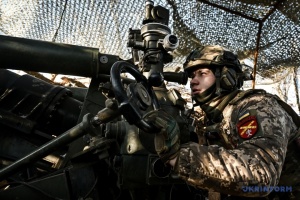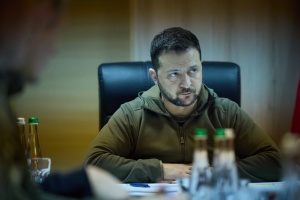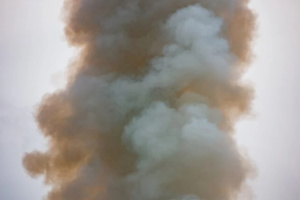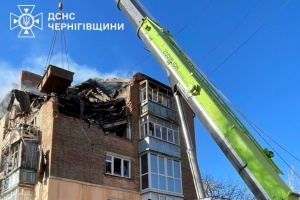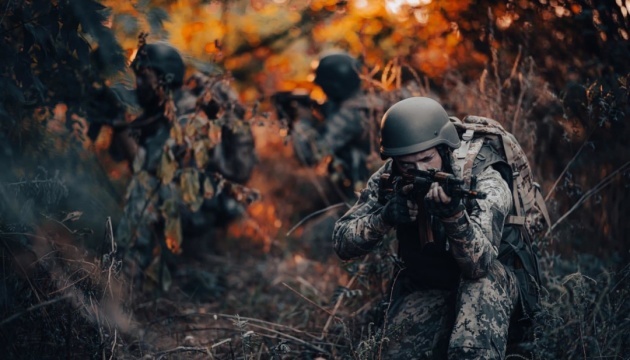
Ukraine Latest: Weekly Digest for September 16-22, 2024
VIDEO
September 16/ Interview: Victory Commanders. Vitaly Lytvyn, National Guard Frontier Brigade Mayor: The first eight hours of the all-out invasion were the most critical
September 16/ Posternak: HUR uses widely sourced intelligence in forecasting Russia’s plans
September 17/ Hopchak: 120 tons of activated carbon were purchased for water disinfection
September 19/ Battle for Light. A transformer damaged and burnt in Russian air strike was displayed in downtown Kyiv
PHOTO
September 16/ A memorial plaque honoring the rescue workers killed by Russian drone attacks on the city was unveiled in Kharkiv
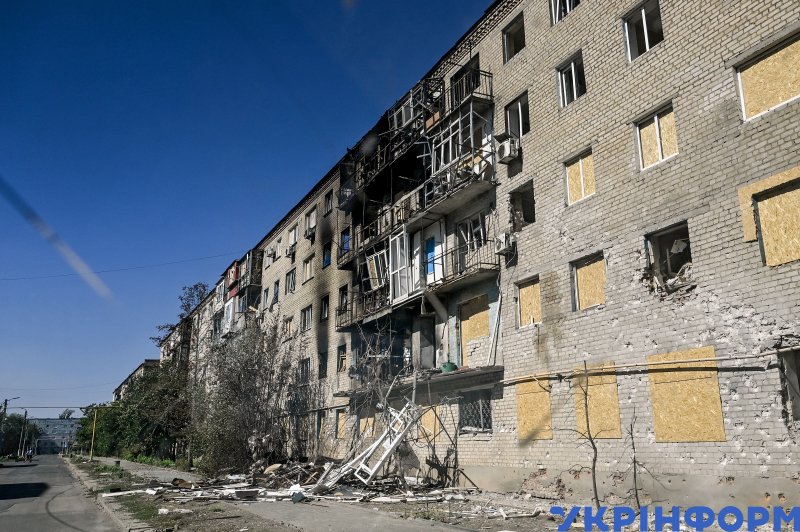
September 16/ The front-line town of Kurakhove, Donetsk Oblast
September 17/ A health care hub for persons displayed from Mariupol city was launched in Kyiv
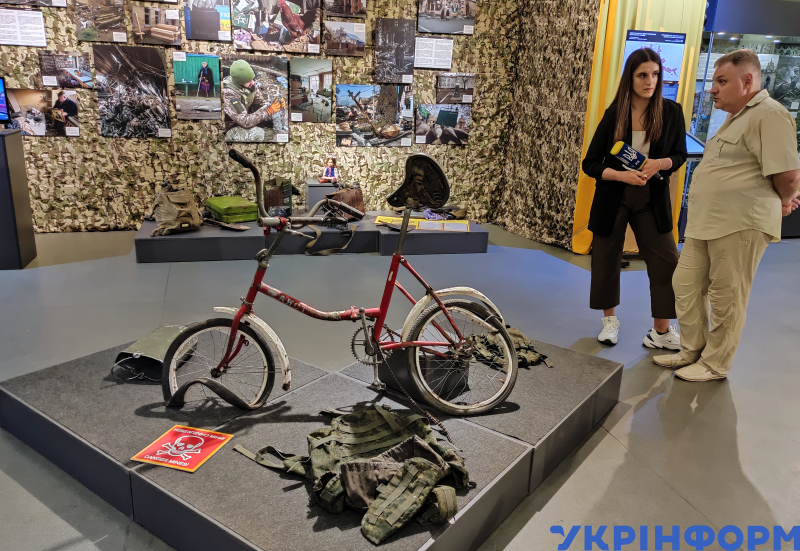
September 17/ A display entitled "On guard for Saint Sophia", dedicated to the Russia-Ukraine war, was unveiled in Kyiv
September 18/ Citizens’ action "Bring war prisoners back home" was staged outside of the Parliament building in Kyiv
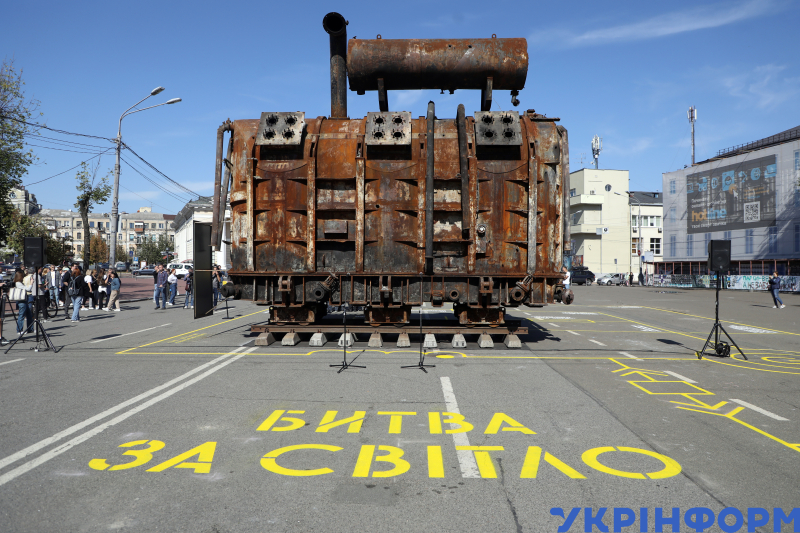
September 19/ A power transformer destroyed in a Russian air strike was displayed on Kyiv’s Kontraktova Ploshcha square
September 20/ A marine soldier with an amputated leg set a new Ukrainian record
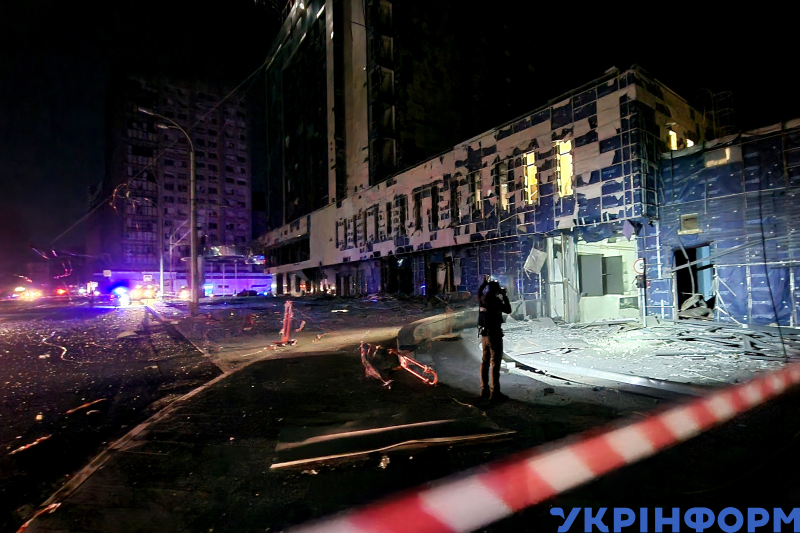
September 20/ The aftermath of a Russian air strike on Kharkiv city
September 20/ The aftermath of Russian air raid on Dnipro city
September 21/ Clean-up of the aftermath of Russian air attacks, Kharkiv
September 21/ Final farewell ceremony for fallen soldier Maksym Kushniruk took place in Vyshneve neighborhood, outside of Kyiv

September 21/ Russian forces deployed glide bombs against Kharkiv city
FIGHTING
The General Staff has reported 1,317 force-to-force engagements for the week from September 16 through 22, 2024. Most of the engagements took place in Kurakhove, Pokrovsk, and Lyman sectors of the frontline. Ukrainian Defense Forces were able to fend off attacks on several axes, continued with their offensive in Russia’s Kursk region.
September 21: Ukrainian forces retook their positions near Zaliznyanske settlement in the Donetsk region, as per DeepState Map.
September 20: Russian forces deployed TOS-1A Solntsepyok heavy flamethrower rockets against Ukrainian troops fighting in the surrounding of Vovchansk town, Kharkiv region.
Kurakhove and Pokrovsk axes saw the greatest number of combat engagements. The adversary was active also on the Vuhledar axis, having deployed numerous attacks against Ukrainian defenses. There are fewer Russian troops deployed there than at Kurakhove or Pokrovsk fronts, but they have changed their tactics from assaulting head-on to trying to encircle the town and get particular locations under fire control.
In the Kharkiv Region, the adversary renewed their offensive effort to advance toward Lukyantsi neighborhood; Ukrainian defenders are containing Russian onslaught.
September 17: Ukraine’s naval units struck and destroyed Russian ammunition storage facilities located near Mariupol city.
September 17: Russian infantry troops sought to break through Ukrainian defense lines running along the Siversky Donets - Donbas channel in Chasiv Yar, but suffered losses and retreated. Ukrainian Defense Forces retain control over the channel.
September 17: Russian invaders pulled up armored vehicles to the Kharkiv axis, presumably in preparation for a new offensive. Russians are currently doing reconnaissance to probe the Ukrainian defense lines for resilience, according to Mykola Volokhov, call sign Abdullah, the leader of the Terra unit at the 3rd Separate Assault Brigade.
September 16: The Defense Forces reported a 40 percent increase in the intensity of Russian aerial reconnaissance operations held in the area assigned to Kharkiv operational-tactical group of forces.
September 21: Four days after blowing up a huge Russian ammunition storage facility in the town of Toropets, the Tver region, 300 miles from Ukraine, Ukrainian drones struck again—landing a second blow on arsenals located near the settlement of Oktyabrsky, Tver region, on Saturday morning while also triggering a massive blast in Tikhoretsk, in southern Russia’s Krasnodar region 200 miles from the front line in Ukraine.
It’s increasingly evident, though not yet confirmed, that the Ukrainians are using their latest explosive unmanned aerial vehicle—the jet-propelled Palianytsia “missile drone”—for these devastating raids.
The ammo dump in Toropets reportedly stored large stocks of small arms ammunition, mortar projectiles, artillery rockets and long-range ballistic missiles potentially including Russian-made Iskanders and North Korean KN-23s.
According to the Ukrainian General Staff, the dump in Tikhoretsk “is one of the three largest ammunition storage bases and one of the keys in the logistical system of Russian troops.”
The general staff estimated 2,000 tons of ammo, including North Korean-made rounds, were held in the Tikhoretsk ammo depot when the drones struck. The towering fireball resulting from the impact seems to confirm that estimate. The initial Toropets raid and the later Tikhoretsk raid were both big enough to register as small earthquakes and also draw the attention of NASA’s fire-spotting satellites.
The Podlyot radar station, which was supposed to spot and warn about the approaching threats, was also destroyed in this attack.
SBU launched drones hit and damaged infrastructure at Shaykovka military airbase in Russia’s Kaluga region, where TU-22M strategic bomber aircraft are stationed.
September 18: a wave of drones launched by the SBU, HUR and Special Operations Forces hit and destroyed a huge ammo stockpile located in the vicinity of Toropets, Tver Oblast, Russia. The facility, owned by the Russian Ministry of Defense, was reportedly storing missiles for Iskander and Tochka-U tactical missile systems, guided aerial bombs, and various artillery ammunition.
Russia counteroffensive against the invading Ukrainian forces in the Kursk region has been "brought to a halt” (as of September 18), according to Oleksiy Dmytrashkivsky, the spokesman for the Ukrainian military administration in the Kursk region.
Ukrainian forces have gained control over a large, unpopulated area surrounding the village of Kamyshovka located outside of Sudzha, Russia’s Kursk region. That area was part of the "grey zone" that had not seen active fighting previously, being surrounded on three sides by territories under Ukrainian military control, as per DeepState Map.
As the war has expended into Russia, its Kursk region, the Russian military are currently using more ammunition for attacks on that region than what they use against the Ukrainian region of Sumy, according to Vadym Mysnyk, the spokesman for the Siversk operational-tactical group of forces.
In Russia’s Kursk region, a Ukrainian launched drone attacked and killed Lt. Col. Aleksandr Kurin, aka Skipper, the Russian Air Force Airborne Assault Regiment commander, according to media reports.
September 17: Ukrainian forces operating along the Kursk axis captured 13 Russian soldiers. Video of the capture was shared by the Ukrainian Armed Forces Ground Force Commander, Oleksandr Pavlyuk.
Moscow has deployed nearly 40,000 personnel to its Kursk region, according to the Financial Times.
September 19: Russia is placing explosives at dams in its own Belgorod Oblast, presumably aiming to stage provocations and accuse Ukraine of causing environmental and humanitarian damage. This is according to Vitaly Sarantsev, spokesman for the operational-tactical group of forces Kharkiv.
Russians are shifting military equipment and ammunition from Crimea to Kursk, according to reports from partisans operating in the currently Russian-held peninsula. This might indicate that the Russian troops fighting in the area are short of weapons and munitions, and try to compensate for the shortage by redeploying resources from currently less active frontline areas.
September 16: Ukrainian Foreign Ministry requested the United Nations and the International Committee of the Red Cross (ICRC) to join humanitarian efforts in Russia's Kursk region following a cross-border incursion by Ukrainian forces.
Ukrainian Foreign Minister Andrii Sybiha said he had instructed his ministry to invite the UN and ICRC to work in the Kursk region.
"Ukraine is ready to facilitate their work and prove its adherence to international humanitarian law," Sybiha said on X after visiting the Sumy region, from where Ukrainian forces launched the cross-borer attack.
He said the Ukrainian army was ensuring humanitarian assistance and safe passage to civilians in the Kursk region.
The Foreign Ministry said the invitations had been sent to the ICRC and UN, "taking into account the humanitarian situation and the need to properly ensure basic human rights in the territory of the Kursk region."
The ministry said it had invited the ICRC to monitor Ukraine's compliance with the principles of international humanitarian law.
Russia's state-run TASS news agency quoted Kremlin spokesman Dmitry Peskov as branding such statements to be "provocative". He made clear Moscow expected the UN and ICRC not to accept the invitations.
A Ukrainian Foreign Ministry spokesperson said the Kremlin's response revealed it disregard for the humanitarian needs of its own people and a fear of letting international observers see the situation in Kursk.
September 15: HUR’s special force Chemist attacked the Russian military base in Syria, near Aleppo, where the Russians manufactured and tested explosive UAVs.
Over the first fifteen days in September, the Russian military deployed over 640 explosive drones Shakhed against towns and villages in Ukraine. More than 900 glide bombs, around 400 Shakhed UAVs, and nearly three dozen missiles were deployed over the week under review.
WAR: LOSSES AND AFTERMATH
ENEMY LOSSES
Over the week from September 16 through 22, 2024, Russia’s war toll in personnel and equipment had totaled:
8,720 personnel;
88 tanks;
169 armored combat vehicles;
224 artillery guns;
9 MLRS vehicles
2 air defense vehicles;
384 tactical-operational UAVs
7 cruise missiles
339 motor vehicles and fuel tanks
60 pieces of specialist equipment.
Ukraine
From September 16 through 22, the Air Defense Forces shot down 318 out of 367 Shahed-131/136 one-way attack drones launched by Russia against Ukraine, 40 UAVs launched were defeated with EW countermeasures and fell in different locations in Ukraine without causing any damage, while three others were diverted back into the Russian Federation. Seven Kh-59/69 cruise missiles targeting Ukraine were shot down over that week. Russian air raids damaged infrastructure and energy facilities in the regions of Sumy, Poltava, Kirovohrad, Kherson, Khmelnytsky, Lviv, and Kyi, killed one civilian and injured eight others.
Russian air attacks on the Ukrainian regions of Donetsk, Kherson, Zaporizhzhya, Dnipropetrovsk, Sumy, and Kharkiv left 22 people dead and 90 others injured.
September 19: A glide bomb dropped by a strike jet across the border with Russia hit a retirement home in Ukraine’s north-central Sumy region on Thursday, killing 1 patient, injuring 14, and forcing the evacuation of 147 elderly living at a care center.
September 21: In late hours that day, Russia launched a FAB-250 glide bomb that hit a high-rise apartment building in Kharkiv city, injuring 21 residents.
September 21: Three people, among them a minor, were killed and three others injured in the aftermath of a Russian missile attack on Kryvyi Rih city.
September 17: People on social networks shared a photo of a captured Ukrainian soldier executed with a sword by Russian troops. The soldier was unarmed, with his hands bound with duct tape before the execution. For now, it is unknown exactly where and when the execution was done. The prosecutor’s office launched an investigation into the suspected execution of a Ukrainian POW by Russian soldiers.
Monitors from the International Atomic Energy Agency documented the presence of armed men and military equipment at the Zaporizhzhia nuclear power plant, seized by Russia. The men prevented members of an IAEA monitoring mission from accessing the site, with the access complicated further due to antipersonnel mines planted between the internal and external fences at the site.
WAR AFTERMATH
Environment
A wild moose was spotted walking around a neighborhood in Kyiv’s Shevchenkivsky district. The animal was caught by emergency workers and handed over to the Zalissya National Park located in Brovary district, not far from Kyiv.
September 17: A large-scale fire, which has spread over 350 hectares, is being extinguished in the Lyman Forest, Donetsk Oblast.
"Last night [15 September – ed.], Russian troops bombarded the town of Lyman in Donetsk Oblast, which caused a forest fire. Due to strong gusty winds, the fire spread hundreds of meters into the forest”, the State Service for Emergencies said in a press statement.
As reported, the fire had burned through an estimated 350 hectares of forest. Firefighting operations were ongoing as of the morning of 17 September.
September 17: the Regional Water Resources Office for Sumy Oblast reported a deterioration in the water quality of the Seym River, including mass fish deaths. No chemical or highly toxic components were detected, and the pollution was determined to be organic.
Wastewater discharged from a sugar refinery in Tyotkino, Russia’s Kursk Region, into the Seym River is suspected to have caused the organic pollution of this and the Desna rivers.
In Sumy region, over 12 tonnes of dead fish were collected from the Seym River, while in Chernihiv region, 19 tonnes of dead fish were collected from the Seym and Desna Rivers.
According to figures provided by the State Environmental Inspectorate, the damage had amounted to approximately UAH 415 million as of 17 September.
Cans with incendiary mixtures dropped from Russian launched drones caused massive fires in forests surrounding Sumy city, having burnt out 50 hectares of forest as of September 17.
More than 365,000 hectares, or 53 percent of contaminated areas on the right bank of the Dnieper River in Kharson Oblast have been cleared of mines. If this rate continues, the whole right-bank part of Kherson Oblast will be mine free by late 2025.
Culture
More than 120 workers of art in Ukraine have died in the aftermath of Russia’s war, and over a thousand objects of cultural heritage have been destroyed to rubble or damaged since the start of the full-scale invasion - Mykola Tochytsky, Minister of Culture and Strategic Communications.
A Polovtsian stone sculpture (stone woman) dating from the 11th to the 13th centuries has been evacuated by volunteers from an area of fighting in the Donetsk region. This is the tenth such sculpture rescued by volunteers since early March 2024.
Since their evacuation from the front lines, the Polovtsian statues and several other ancient monuments have been given temporary shelter in Dnipro.
The Historical Museum in Dnipro has the largest collection of ancient stone figures in Ukraine, with 104 in total. Sculptures evacuated from the front lines in the Donetsk region are not counted in that total as they are categorized as being in temporary storage.
"This is a very important historical artifact. There are not many of them left, so they must be saved. This is our history, our identity," the volunteers said.
Employees at the Kherson Art Museum identifed another one painting stolen by Russian soldiers as they were fleeing Kharson. This is Leonard Turzhansky’s "Landscape. Chickens."
The canvas, painted in oil in 1920, is currently in storage in the Simferopol Central Tavrida Museum. Turzhanskyi's work was accidentally noticed stored in an improvised storage at the Central Tavrida Museum in Simferopol, on a video shown on Russian TV.
Overall, Ukrainian experts have identified 126 works of art the Russian army stole from Ukrainian museums and brought to Crimea.
Economy
From March through August, Russia deployed nine waves of massive, complex and coordinated attacks on energy facilities in 20 different regions in Ukraine and in Kyiv city, causing power outages lasting from 4 to 18 hours a day.
Currently, there are 512 agricultural enterprises operating in the Donetsk region, of which 353 (69 percent) suffered losses, destruction or damage in the aftermath of Russia’s all-out war.
In Kirovohrad Oblast, approximately 130 hectares of agricultural land is currently unusuable due to Russian strikes; the damage is estimated to have reached UAH 5.1 million as of this date.
The State Energy Inspectorate has inspected 1,300 power grid facilities that suffered damage in Russian air attacks this year so far. Russia has deployed a total of 1,024 aerial attacks on energy infrastructure in Ukraine from October 2022 through September 2024.
The Faktor-Druk printing house in the city of Kharkiv, which was struck by Russian missiles on 23 May, has resumed its operations.
The printing company is currently producing school textbooks and recruiting new employees.
After the Russian missile strike, the rubble in the printing house was cleared, the premises partially refurnished, and new equipment was put into operation.
So far the printing house is unable to operate the full cycle, from a project of the book to creating its cover.
For this reason, the printed books are handed over to other printing houses to be made into covers and handed over to stores and schools.
The Russian attack on the Faktor-Druk printing house in the city of Kharkiv on 23 May destroyed over 50,000 books and affected at least three publishing houses in Ukraine.
Russia has stolen and appropriated over UAH 30 billion worth of Ukrainian grain as of this date, according to a report released by the Prosecutor General's Office.
Emergency services; children
Nearly one hundred emergency workers have died in Ukraine in the aftermath of Russia’s full-scale invasion over the time beginning on February 24, 2022.
Over the time of the full-scale war in Ukraine, 1,609 Ukrainian children have suffered injuries and 1,957 others are on wanted list as of September 19, 2024.
In the Zaporizhzhia region, underground schools are being constructed with the use of reinforced concrete, which is the first such project in Ukraine. The first underground schools are set to be launched in October-November, one of them built at 15 km from the frontline.
WAR: POLITICAL DECISIONS, TECHNOLOGICAL BREAKTHROUGHS, ARMAMENTS, ALLIED AID
Ukrainian home front
President of Ukraine Volodymyr Zelensky:
September 16:
endorsed a legislation allowing unmanned systems units to be incorporated into particular branches of the Armed Forces;
at a meeting held at the Supreme Commander-in-Chief Headquarters, listened to intelligence reports on Russia’s short- and long-term plans, and on the current status of its forces;
September 18:
met and talked with the Armed Forces chief commander, Oleksnadr Syrsky to discuss the progress of Ukraine’s offensive into Russia’s Kursk region and the battlefield situation in eastern Ukraine;
September 20:
endorsed the National Security and Defense Council (NSDC) resolution to sanction six individuals and over 40 legal entities from Russia, Iran and China;
September 21:
chaired a meeting at the Supreme Commander-in-Chief Headquarters addressing measures deemed necessary to protect the country’s energy infrastructure from Russian attacks ahead of the upcoming cold season, the status of national production programs for missiles, UAVs and EW technologies, as well as the situation on Ukrainian battlefields;
Key takeaways from President Zelensky’s news briefing:
Ukraine is drawing up a plan that would provide the start and the foundation for talks, of whatever format may be appropriate, with Russia;
We have announced ready to see Russia among the attendees to the follow-up Peace Summit, because our allies all said that Russia should be at the table;
Active work is currently underway "on our plan, three points have already been finalized, and online meetings have already been held." There will be more meetings, held both offline and online. The plan as a whole is set to be finalized by early November”;
Dismissed reports published by the Wall Street Journal, alleging that Ukraine has lost approximately 80,000 soldiers killed in the war with Russia. The actual number is way lower than the one claimed by the outlet.
Visits to Ukraine
President of the European Commission Ursula von der Leyen
President Zelensky held a press conference alongside President of the European Commission, Ursula von der Leyen. Following are the key highlights:
Zelensky: The “plan for victory” he is going to set out to the US President Joe Biden envisages quick and concrete steps by our strategic partners - from now until the end of December”;
Ursula von der Leyen: the EU is set to loan EUR 35 billion to Ukraine;
Zelensky: the bulk of the EUR 35 billion loan will be spent on the energy sector, bomb shelters at schools and universities, as well as weapons procurements;
Zelensky: the key topics he discussed with visiting EU chief Ursula von der Leyen addressed an access to Russian sovereign assets immobilized on European bank accounts, EU’s support for Ukraine’s energy and defense needs, and diplomatic interaction.
Ukrainian Prime Minister Denys Shmyhal and EU chief Ursula von der Leyen agreed to hold a government-to-government meeting between Ukraine and the European Union.
Ursula von ler Leyen: The EC has developed a plan to support Ukraine during the upcoming cold season, which will help cover 25% of the 17 gigawatts of capacity Ukraine needs this winter through electricity exports and by helping to repair infrastructure damaged in Russian attacks.
The EU will also support Ukraine with 160 million euros ($178 million), including 60 million euros ($67 million) for humanitarian aid such as shelters and heaters, plus 100 million euros ($111 million) for repairing energy infrastructure and developing renewable energy.
Approximately EUR 100 million of that amount will be funded by windfall proceeds from immobilized Russian central bank assets.
Defense Minister Rustem Umerov and President of the European Commission Ursula von der Leyen cut ribbon of the EU Defense Innovation Office in Kyiv.
***
Ukraine’s Foreign Minister Andrii Sybiha officially notified the International Atomic Energy Agency (IAEA) about Russia’s intentions to strike critical nuclear energy infrastructure in Ukraine ahead of the winter season.
Russia’s massive strikes on Ukrainian energy grids in 2024 so far have destroyed 80 percent of thermal generation and 40 percent of hydroelectric power capacities in Ukraine, as per the International Monetary Fund, leaving nuclear energy one of Ukraine’s last functioning power generating capacity.
Attacks on these facilities pose a high risk of a nuclear incident with global implications. Ukrainian intelligence services have already shared this information with partners, and Sybiha has also informed the IAEA on the matter.
The National Coordination Center for Cybersecurity (NCCC) banned Telegram on work devices for government employees, military personnel, people employed in the security and defense sector and in critical infrastructure companies.
Defense Minister Rustem Umyerov, in a televised appearance, said:
every month Ukraine brings together 50+ partners who are ready and willing to help Ukraine;
Ukraine has the capacity to manufacture several million drones every year;
Ukraine's partners never once told any of the country’s officials that strikes deep into the Russian Federation were impossible;
Ukraine is negotiating the purchase of Gripen and Eurofighter jets.
Ministry of Defense of Ukraine:
authorized the Canadian-made Roshel Senator MRAP vehicle for use by the Ukrainian Armed Forces;
authorized the indigenously made pulse metal detector Khortych for use by the country’s armed services;
authorized the locally made amphibious all-terrain vehicle TAHA for use by the Ukrainian Armed Forces;
received €40.7 million from Denmark to pay for procurements of Ukraine’s domestically produced Bohdana self-propelled howitzer.
September 20
Ukraine’s Minister of Finance Serhiy Marchenko presented in parliament a draft law on “2025 State Budget of Ukraine".
Verkhovna Rada:
adopted a law to boost the 2024 national budget by UAH 500 billion to be spent on military needs;
dismissed Maryana Bezuhla as deputy chair and member of the Committee on national security, defense and intelligence;
The Ministry of Defence is expected to issue a directive in the coming days to prohibit men aged between 18 and 25 who were deemed unfit for military service in peacetime and limitedly fit in wartime from being mobilized amid martial law.
Currently, citizens aged 25 to 60 are eligible for mobilization. However, there are exceptions for men younger than 25 years old, specifically for those already registered as liable for military service (and not as a conscript) and eligible for mobilization on general grounds. The exceptions apply to those men who underwent military training at units attached to a civilian college or university and graduated with a rank of Officer, or served conscription service.
September 17: Ukraine’s Ministers for Sports and Foreign Affairs, and the President of the National Chess Federation filed a letter with the International Chess Federation (FIDE) requesting against the potential reinstatement of Russia and Belarus into FIDE ahead of a crucial vote this weekend. The two countries were expelled from FIDE in 2022 due to Russia's invasion of Ukraine.
The proposed readmission of Russia and Belarus has sparked controversy within the chess community and beyond. Specifically Ukraine's sports minister, Matviy Bidny emphasized the importance of maintaining sanctions against Russia and Belarus while the war continues.
"Sanctions against Russia and Belarus should only be toughened as long as the war continues, as dictatorial regimes are trying to legitimize the war against Ukraine by using sports and athletes," Bidny said.
In August 2024, Ukraine’s gross domestic product grew 3.5 percent year-on-year.
The Board of the National Bank of Ukraine has decided to keep its key policy rate at 13%. This decision will help gradually bring inflation back to the target of 5% in the coming years and support the sustainability of the FX market.
Over a year of operation of the export sea corridor, Ukraine has transported 70 million tons of cargo. More than 2,500 vessels have departed from Ukrainian ports, according to President Volodymyr Zelensky.
In a statement, Zelenskyy noted that, despite the war and Russian terror, Ukraine continues to be a donor of global food security for dozens of countries and is expanding its capacities and capabilities.
"Over a year of operation of our export sea corridor, 70 million tons of cargo have been transported. More than 2,500 vessels have departed from Ukrainian ports. Ports in Asia, Africa, Europe, and the Americas are receiving our Ukrainian cargoes. Countries from Egypt to Indonesia, from Tunisia and Libya to India, and from Algeria to China have received our Ukrainian grain," Zelensky said.
He added that thanks to the humanitarian initiative Grain from Ukraine, aid has also reached Ethiopia, Somalia, Yemen, and Sudan.
Ukraine’s Justice Ministry has filed a second lawsuit with the High Anti-Corruption Court to seize assets belonging to Vyacheslav Bohuslaev, the former President of the Motor Sich aircraft engine manufacturer.
The lawsuit aims to seize real estate and 100 percent of capital share in INNOVA LLC.
Odesa city mayor, Hennadiy Trukhanov has flatly denied the latest accusations that he holds Russian citizenship, a claim that re-emerged on Tuesday after Ukrainian activist and blogger Serhiy Sternenko had posted the screenshots of the documents allegedly verifying the mayor’s second citizenship.
The controversy got a knee-jerk response from Trukhanov who took to social media to dismiss the allegations as “nothing new”, arguing they had never been confirmed at the official level.
Sternenko also claimed that the data from leaked Russian databases suggested Trukhanov was issued a Russian bank card on February 9, 2022.
The mayor urged people to trust “official sources” rather than bloggers for such sensitive information.
“The same old song… all the proper law enforcement agencies have repeatedly confirmed: Hennadiy Trukhanov DOES NOT have Russian citizenship. To those with common sense, this topic has already grown tiresome. And to everyone else, a reminder: the correct place to check such information is through official state and law enforcement agencies, not bloggers,” wrote Trukhanov.
Ukrainian law bans the voluntary acquisition of another citizenship for Ukrainian nationals, and officials are not allowed to have dual citizenship.
The Kyiv Region is nearly almost 90 percent ready for the upcoming heating season. More than 1.900 autonomous generators have been installed at schools and children’s day care centers to ensure a continuous educational process. But there is little time left before the season starts. Therefore, districts, communities, and relevant entities should speed up work to remove the remaining bottlenecks, said Ruslan Kravchenko, head of the regional military administration.
ALLIES AND PARTNERS
Department of the US Treasury’s Office of Foreign Assets Control (OFAC) designated a network of five entities and one individual—based in Russia and in the Russia-occupied Georgian region of South Ossetia—that have enabled and supported ongoing efforts to establish illicit payment mechanisms between Russia and the Democratic People’s Republic of Korea (DPRK). Today’s action holds accountable parties that have assisted DPRK and Russian sanctions evasion and support Russia’s illegal war against Ukraine.
The new sanctions demonstrate the Putin regime’s use of illicit financial schemes to enable the DPRK to access the international banking system in violation of targeted financial sanctions required under United Nations Security Council resolution (UNSCR) 1718.
“Today’s action underscores our significant concern with efforts by Russia and the DPRK to deepen financial cooperation, in violation of UN Security Council resolutions,” said Acting Under Secretary of the Treasury for Terrorism and Financial Intelligence Bradley T. Smith.
U.S. Secretary of State Antony Blinken was briefed last week during his trip to Kyiv on elements of a Ukrainian plan to push Russia to end the war, U.S. State Department spokesperson Matthew Miller said on Tuesday.
President Volodymyr Zelenskiy first spoke of his "victory plan" last month, saying he wanted to discuss it with U.S. President Joe Biden. He is expected to present it on the sidelines of the U.N. General Assembly meeting in New York next week that he said he hopes to attend.
The EU parliament, at a plenary session on September 19 in Strasbourg, adopted a resolution urging EU countries to lift current restrictions hindering Ukraine from using Western donated weapons systems against viable military targets inside Russia.
The text states that without lifting current restrictions, Ukraine cannot fully exercise its right to self-defence and remains exposed to attacks on its population and infrastructure.
The International Atomic Energy Agency (IAEA) has urged Moscow to immediately withdraw its military and other personnel from the Zaporizhzhia Nuclear Power Plant (ZNPP) and to hand the plant back over to the Ukrainian authorities to ensure its safety.
Releavant resolution, titled “Nuclear safety, security and safeguards in Ukraine” and co-authored by 52 member states, was adopted at the 68th IAEA General Conference by 65 votes.
Meanwhile, until the ZNPP is brought back under Ukraine's control, Russia is obligated to grant the IAEA unrestricted access to all facilities and information at the plant.
Germany has handed over a new military aid package to Ukraine, which includes 22 Leopard 1 A5 tanks and more than 60,000 rounds of 155-mm ammunition.
In addition to the Leopard tanks, which the country handed over jointly with Denmark, and 61,000 rounds of 155 mm ammunition, Ukraine will also receive:
five Bandvagn 206 (BV206) tracked all-terrain vehicles
one Warthog all-terrain tracked vehicle;
three GEPARD self-propelled anti-aircraft systems with spare parts;
two TRML-4D air surveillance radars;
10 MG3 machine guns with 500 spare barrels and breechblocks;
1 million rounds of small arms ammunition.
Ukraine will receive the second battery of the SAMP/T air defense system from Italy by the end of September.
Latvia’s Ministry of Defense announced it would supply Ukraine with the CVR(T) tracked armored vehicles it had purchased from Great Britain.
The family of CVR(T) vehicles are renowned for their agility and versatility, capable of a wide range of roles, including reconnaissance, patrol, fire support, and medical evacuation.
Dutch Defence Minister Ruben Brekelmans believes that the North Atlantic Alliance should shoot down drones and missiles that violate its airspace.
Brekelmans stressed that Russia's violation of NATO airspace "is unacceptable and dangerous".
"Our response must be clear. Drones and missiles entering our airspace should be detected and intercepted. If needed, NATO should support individual allies," he added.
Danish Defense Minister Troels Lund Poulsen announced that his country would deliver a new batch of F-16 fighter jets to Ukraine by year’s end.
The Mirage 2000-5F fighter jets France intends to transfer to Ukraine will be delivered modified for air-to-ground attacks. Initially designed for air-to-air combat, the Mirage 2000-5F aircraft is currently made for launching air-to-air missiles, but this modification will add to versatility.
An Estonian defense manufacturer announced it would launch a production line for anti-drone missile systems in Ukraine.
The announcement by Frankenburg Technologies is the latest sign of European arms producers’ interest in opening up production facilities on Ukrainian soil. In February, German manufacturer Rheinmetall AG announced it would open a new plant in Ukraine to produce artillery ammunition.
Lithuania is preparing a new security aid package worth EUR 40-50 million for Ukraine. The package includes a EUR 10 million donation to support production of Ukraine’s newly developed Palyanytsia missile-drones.
German Foreign Minister Annalena Baerbock has promised Kyiv an extra €100 million ($111 million) in aid to help Ukraine see through the winter as Russia stepped up its attacks on energy infrastructure with winter on the hoizon.
Romania called on Sept. 18 for a "robust and coordinated" response by NATO to Russian drones violating allied airspace during attacks against Ukraine.
Speaking at a meeting of the Bucharest Nine (B9) format, Romanian Defense Minister Angel Tilvar called for "enforcing the rotational air defense and integrated anti-missile model as soon as possible."
On several occasions, Romanian authorities have uncovered drone wreckage near their border with Ukraine in the Danube River region. Airspace violations by Russian drones or missiles have been reported also by Moldova, Latvia, and Poland.
None of the said countries attempted to intercept Russian drones that flew across the border into their territory.
PUBLICATIONS AND INTERVIEWS
September 16/ Dmytro Kozatsky, photographer, serviceman of the Armed Forces: I try to use every public event to remind about the prisoners of war
September 17/ "War is like a drug, no one leaves it for no reason"
September 17: Bohdan Ferentz, founder and head of the Social Democratic Platform: Long-range weapons and permission to use them can be a significant contribution to Ukraine's victory.
September 17/ Vitaly Lytvyn, Ukrainian National Guard Frontier Brigade Mayor, Hero of Ukraine: The first eight hours of the full-scale invasion were the most critical
September 18/ How a museum in Kropyvnytskyi turned into a shelter for artists.
September 18/ Ukrainian glider bombs: We will not be able to reach a parity in numbers with the Russian Federation, but we will beat the enemy with quality.
September 18/ Aerial warriors: "General Cherry hunting for enemies.
September 18/ Vadym Hladkov, second in command, Ukraine National Guard: Both we and the adversary will move on to intensive use of unmanned systems for all the tasks within the next few years.
September 18/ Invisible wounds: Rehabilitation center restoring the psyche of our defenders.
September 19/ Ihor Sholtys, Nachtigal Battalion soldier: Kursk incursion is our revenge and a new front in the Russian Federation this time around.
September 20/ Evacuation from Donetsk region: The smell of napalm, glide bombs in gardens, and drones overhead
September 20/ The upcoming winter season will be more difficult to endure than in 2022-2023. It is worth realizing and preparing.
September 20/ How is the strike on Russia’s 107th Arsenal going to impact on the war? Does it mark a new phase of war?
Compiled by Marina Dmytriv


